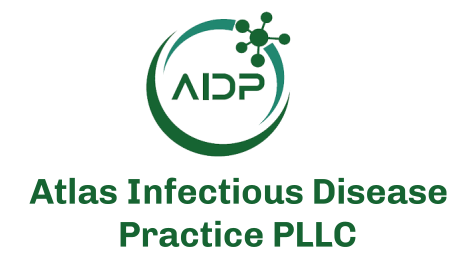Disclaimer: Early release articles are not considered as final versions. Any changes will be reflected in the online version in the month the article is officially released.
Author affiliation: Centers for Disease Control and Prevention, Atlanta, Georgia, USA (E.F. Saunders, B.N. Ayres, W.L. Nicholson, J.S. Salzer); University of North Carolina, Chapel Hill, North Carolina, USA (E.F. Saunders, S.P. Commins); Maine Center for Disease Control and Prevention, Augusta, Maine, USA (H. Sohail, D.J. Myles); MCD Global Health, Hallowell, Maine, USA (D.J. Myles); Maine Medical Center, Portland, Maine, USA (D. Charnetzky)
Alpha-gal syndrome (AGS) is an IgE-mediated hypersensitivity to the disaccharide galactose-α-1,3-galactose (α-gal), found in tissues of nearly all mammals. Spatial distribution of AGS case-patients in the United States closely follows the geographic range of established lone star tick (Amblyomma americanum) populations. However, some case-patients were identified outside that range (1,2). Other global tick species cause AGS in humans; other human-biting ticks in the United States may play a role in α-gal sensitization. The α-gal molecule is found in saliva or salivary glands of Haemaphysalis longicornis and Ixodes scapularis ticks (3,4).
To examine the possible role of other tick species causing AGS in the United States, we investigated a patient with confirmed AGS in Maine, USA, showing symptoms 9 days after a black-legged tick (I. scapularis) bite. The Maine Center for Disease Control and Prevention (Maine CDC) collected surveillance data for 57 confirmed or suspect cases of AGS, including this case.
On May 4, 2022, a 45-year-old woman discovered an attached tick medial to her left bicep after returning from a wooded path in York County, Maine (Figure 1, panel A). She appropriately removed the tick and identified it as an adult female I. scapularis, which entomologists at the Centers for Disease Control and Prevention (US CDC) confirmed through morphologic and molecular identification (5). By May 7, 2022, the bite area had become inflamed and pruritic and had an enlarged, erythematous circumference.
The patient was otherwise healthy and had no allergies and no known recent exposure to endoparasites or ectoparasites (e.g., mites) except the reported tick; she was treated 9 years earlier for presumed ascariasis (records not available) attributed to organic farm work in Maine. At the time of the tick bite, she worked indoors and participated in regular outdoor recreation in Maine. She traveled to suburban Fort Lauderdale, Florida, USA, 112 days before the tick bite and reported no known tick bites while traveling. She had not previously found an attached tick in >10 years.
The patient’s first gastrointestinal (GI) symptoms occurred May 13, 2022, nine days after the tick bite and 2.5 hours after a meal of roasted rabbit and 1 alcoholic beverage. Symptoms, including delayed-onset abdominal pain and malaise lasting ≈3 hours, continued to occur over the next 2 weeks after meals containing red meat (Table 1). All meals were shared with others who did not experience symptoms, and only mammalian meat products were associated with symptoms. A severe episode of diarrhea and vomiting hours after beef consumption prompted the patient to visit a healthcare provider (HCP) 20 days after the tick bite.
The HCP ordered a complete blood count, comprehensive metabolic panel, lipase, amylase, and Helicobacter pylori breath test on May 24, 2022, to investigate the patient’s abdominal pain. All results were unremarkable. An ultrasound for gallstones was ordered but not completed because results of serum α-gal–specific IgE testing showed levels greater than the upper limit of detection at >100 kU/L (Eurofins Viracor, https://www.eurofins-viracor.com) (Figure 2). The HCP advised avoiding beef, pork, and lamb. The patient continued to consume and tolerate small amounts of dairy, including cheese and half and half. Ice cream and milkshakes caused delayed mild GI distress and nausea. Symptoms resolved on an avoidance diet.
The patient’s symptoms fit the GI phenotype of AGS (6). She did not experience hives, angioedema, respiratory difficulty, hypotension, or anaphylaxis. Meal cofactors, such as alcohol and exercise, might have accentuated symptoms (7).
The patient found 2 ticks attached in the 1–2 months after initial tick attachment: nymphal I. scapularis (US CDC morphologic and molecular confirmation) and Dermacentor variabilis (patient identification, specimen not available). The nymphal I. scapularis bite site became mildly pruritic, but the D. variabilis bite site did not. The original tick bite site remained pruritic for 2 months.
Consumption of bacon at 3 months and steak at 7 months after first symptoms led to delayed heartburn sensations. Ten months after first symptoms, the patient tolerated a steak dinner and roast beef sandwich and resumed eating red meat. α-gal–specific IgE at 13 months (June 13, 2023) measured 16 kU/L and at 25 months measured 4.58 kU/L.
Although AGS is not a reportable condition in Maine, Maine CDC increased surveillance efforts in 2023 to elucidate epidemiologic trends in locally reported cases (Table 2). Maine CDC received positive α-gal–specific IgE laboratory reports spanning November 2014–October 2023 for 57 Maine residents (average age 57 years; range 7–81 years), including 35 (61%) men and 22 (39%) women; 29 (51%) were 45–64 years of age, and 20 (36%) were >65 years of age. Of the 57 case-patients, 55 had race and ethnicity data available and reported White race and non-Hispanic ethnicity. Case-patients resided in 12 counties; 74% lived in coastal counties (Table 2).
Maine CDC confirmed AGS in 23 of 57 case-patients according to the 2022 Council of State and Territorial Epidemiologists case definition by interviewing HCPs or patients and reviewing medical charts. The other 34 case-patients were categorized as suspected cases. Those cases were not confirmed because of insufficient information in medical charts and absence of patient interviews. Insufficient information took 1 of 2 forms: not enough information to confirm allergy (11/57 case-patients) or evidence of red meat allergy noted but without delayed timing of symptoms specified (23/57 case-patients). For the 23 case-patients without delayed timing of symptoms specified, chart review revealed clinical evidence of allergy to meat or α-gal–containing products, including 7 case-patients with clinician-diagnosed AGS.
Interviews were conducted with 12 of 23 confirmed case-patients and travel histories collected from 10. Regarding symptom onset date, 3 of 10 reported and 7 of 10 denied out-of-state travel in the prior 6 months, but 4 of 7 who denied proximate travel reported out-of-state travel or residence in prior years. Of 12 case-patients interviewed, 11 reported >1 recent tick bites. Interviewed case-patients self-reported exposures to lone star, black-legged, and other ticks. Chart review and HCP interviews did not capture travel or tick exposures for the 11 confirmed case-patients not interviewed.
We report a confirmed case of AGS in a Maine resident with symptom onset 9 days after a confirmed bite from an I. scapularis tick. Although lone star ticks have been sporadically found in Maine since the 1990s, established populations have not been identified (8). Lone star ticks comprised 0.5% of specimens submitted to the University of Maine Cooperative Extension Tick Laboratory in 2022 (9). Of 95 lone star tick submissions since 2019, at least 20% were reportedly acquired in Maine (10). The patient described here was bitten early in tick season, and the bite produced a pronounced cutaneous reaction often described in AGS, suggesting the I. scapularis tick bite on May 4, 2022, was associated with AGS onset (7,11,12).
A prior study found that patients with AGS report greater numbers and frequency of tick bites than do negative controls (13). The patient might have experienced other lifetime tick bites, some unrecognized, that contributed to AGS development. Prior α-gal sensitization from other lifetime tick bites or prior Ascaris roundworm exposure (associated with α-gal sensitization globally) might also explain the rapid 9-day symptom development (14,15). Nine days is within a range observed in coauthor experiences diagnosing and managing patients with AGS (S.P. Commins, unpub. data).
In conclusion, we confirmed AGS in 23 Maine residents identified through retrospective surveillance. Further exploration is necessary regarding the role of I. scapularis ticks in AGS and factors driving AGS onset in patients residing outside the established lone star tick range. Our findings highlight the need for HCPs and public health professionals in such regions to be aware of AGS.
Dr. Saunders is an infectious diseases clinical fellow at the University of North Carolina at Chapel Hill. Her current research includes the epidemiology of alpha-gal syndrome.








